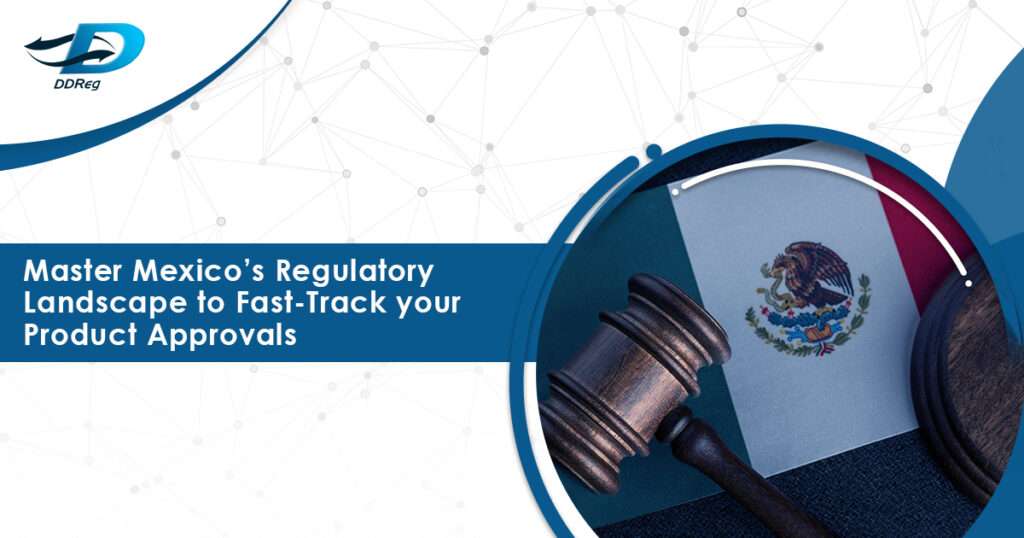
Drug Registration Process in Mexico
The pharmaceutical market in Mexico is one of the largest in Latin America, ranked second only to Brazil. With a growing population, increased government focus on healthcare access, and rising demand for innovative therapies, Mexico presents an attractive opportunity for pharmaceutical companies seeking market expansion. However, gaining regulatory market approval mexico, this dynamic market requires a deep understanding of the drug registration process in mexico administered by the Federal Commission for the Protection against Sanitary Risks (COFEPRIS), Mexico’s national regulatory authority.
In this blog, we unpack the drug registration pathway in Mexico,market approval, pharmaceutical regulations,outline cofepris drug approval process, and provide strategic insights for companies looking to successfully product registration in mexico.
Classification and Regulatory Pathways in Drug Registration in mexico
The pathway for drug registration in Mexico varies depending on the product type. Broadly, medicines are categorized into new chemical entities (NCEs), generics,medical devices,cosmetic product , biologics (including biosimilars), and over the counter (OTC) or herbal products in mexico market.
- New Chemical Entities undergo a rigorous evaluation process. Sponsors must submit a dossier preferably in CTD (Common Technical Document) format covering data on pharmaceutical quality, preclinical studies, clinical trial results, and risk management plans. Depending on dossier completeness and therapeutic area, timelines for approval can range between 12 to 18 months. However, COFEPRIS may offer an expedited route through reliance mechanisms if the product is already approved by reference regulatory authorities such as the FDA, EMA, or Health Canada.
- Generic drugs, on the other hand, must demonstrate bioequivalence with an approved reference drug product registration in mexico. Local bioequivalence studies are typically required unless waived through international mutual recognition frameworks. While the review timelines for generics are shorter, usually around 8 to 12 months companies must ensure thorough documentation and local representation.
- For biologics and biosimilars, the bar is set higher. Sponsors must submit comparability studies, robust quality data, and detailed pharmacovigilance plans. As these products are often more complex in nature, the pharmaceutical product registration process can be longer and may involve post-approval risk mitigation strategies.
- OTC drugs and herbal medicines benefit from lighter regulatory scrutiny but still require demonstrable safety and efficacy. In all cases, the final marketing authorization services is issued for a five-year period and is renewable thereafter.
Key Dossier Components and Local Requirements in Cofepris Registration
The drug registration dossier submitted to COFEPRIS must cover five key modules: administrative/legal documents, quality (CMC) information, non-clinical and clinical data, and pharmacovigilance plans. Notably, all documents must be submitted in Spanish, and translations must be certified. Additionally, a local legal representative known as a “responsable sanitario” is mandatory for foreign companies. This individual will act as the liaison with COFEPRIS and is responsible for pharmacovigilance compliance.
Manufacturers must also provide Good Manufacturing Practice (GMP) certificates. While COFEPRIS recognizes certifications from certain international agencies, it retains the authority to conduct its own site inspections. Understanding whether local inspection is necessary can help companies better plan their market entry timelines in mexico.
Reliance and Expedited Review Pathways
In recent years, COFEPRIS has introduced recognition and reliance pathways to streamline the approval of products already authorized by reference agencies. Under this framework, applicants can submit evidence of prior approval from trusted regulators along with abridged dossiers, significantly reducing review timelines. For certain priority health products—including orphan drugs, treatments for public health emergencies, and pediatric formulations accelerated reviews may be granted on a case-by-case basis.
Pharmacovigilance and Post-Market Obligations
Post-marketing surveillance is a critical component of Mexico’s regulatory authority framework. Upon approval, companies must establish a pharmacovigilance system in the country. This includes appointing a Qualified Person for Pharmacovigilance (QPPV), maintaining safety databases, and submitting Periodic Safety Update Reports (PSURs) in accordance with COFEPRIS drug registration guidelines. Any serious or unexpected adverse events must be reported within defined timelines.
Evolving Landscape and Strategic Considerations
COFEPRIS has taken meaningful steps in recent years to modernize its regulatory processes. The adoption of digital tools and tracking systems now allows applicants to monitor the progress of their submissions online. Moreover, public-private collaboration has increased transparency and fostered greater engagement between the regulatory and the industry.
Companies looking to pharmaceutical product registration in mexico should consider several strategic elements:
- Early regulatory consultation can help define the optimal pathway and identify data gaps.
- Leveraging international approvals through recognition mechanisms may accelerate time-to-market.
- Engaging local experts and regulatory consultants can improve dossier quality and streamline interactions with COFEPRIS.
Additionally, pricing and reimbursement, although not regulated by COFEPRIS, must be considered as part of the broader market access strategy. The Inter-Ministerial Commission for the Control of Prices of Medicines and Health Supplies (CIPM) is responsible for setting maximum retail prices, particularly for products procured by the public sector.
Conclusion
The drug registration process in Mexico is governed by a robust regulatory framework that aligns increasingly with international standards. While COFEPRIS ensures rigorous evaluation, its openness to global harmonization and reliance mechanisms presents opportunities for faster access to this high-potential market.
For pharmaceutical companies, success lies in a well-prepared dossier, early engagement with regulatory authorities, and a strong local presence. With healthcare demand on the rise and a favorable regulatory climate, Mexico offers not only access to a large and growing patient population but also a gateway to the broader Latin American region.
About DDReg
DDReg is a global regulatory solutions provider supporting pharmaceutical company with strategic drug registration, compliance, and market access. With proven expertise in Latin America, including Mexico’s COFEPRIS, we help streamline submissions, accelerate approvals, and ensure end-to-end regulatory success in mexico market.
Read more from our experts here: Impact of International Regulatory Harmonization Initiatives on Pharmaceutical Development
